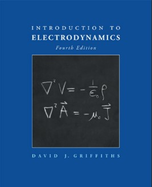Solution Found!
(a) A long metal pipe of square cross-section (side a) is
Chapter 3, Problem 55P(choose chapter or problem)
Problem 55P
(a) A long metal pipe of square cross-section (side a) is grounded on three sides, while the fourth (which is insulated from the rest) is maintained at constant potential V0. Find the net charge per unit length on the side opposite to V0. [Hint: Use your answer to Prob. 3.15 or Prob. 3.54.]
(b) A long metal pipe of circular cross-section (radius R) is divided (lengthwise) into four equal sections, three of them grounded and the fourth maintained at constant potential V0. Find the net charge per unit length on the section opposite to V0. [Answer to both (a) and (b):
Reference prob 3.15
Questions & Answers
QUESTION:
Problem 55P
(a) A long metal pipe of square cross-section (side a) is grounded on three sides, while the fourth (which is insulated from the rest) is maintained at constant potential V0. Find the net charge per unit length on the side opposite to V0. [Hint: Use your answer to Prob. 3.15 or Prob. 3.54.]
(b) A long metal pipe of circular cross-section (radius R) is divided (lengthwise) into four equal sections, three of them grounded and the fourth maintained at constant potential V0. Find the net charge per unit length on the section opposite to V0. [Answer to both (a) and (b):
Reference prob 3.15
ANSWER:
Solution 55P:
Step 1 of 4:-
In this problem we need to find the net charge per unit length on the side opposite to .
The condition is same as the condition we faced in problem 3.15 and we already know the potential inside the pipe.
Three sides are grounded and the 4th one is kept at a constant potential .
So, the 1st thing which come into our mind is to use the method of images where we can introduce a charge between the two opposite plates.
2nd thing is to introduce another charge below the grounded plate.
The job is to place the two charges at particular distance from the grounded plate that it will create zero potential at the grounded plate, because grounded means zero potential. This is the way we introduce our zero potential.
But the same charge which is kept in between the plates one at potential and another grounded must create potential
at the insulated plate with one more
charge which has to be kept above the insulated surface.
It’s a complicated job but still solvable, but we will go for an easy calculation.
